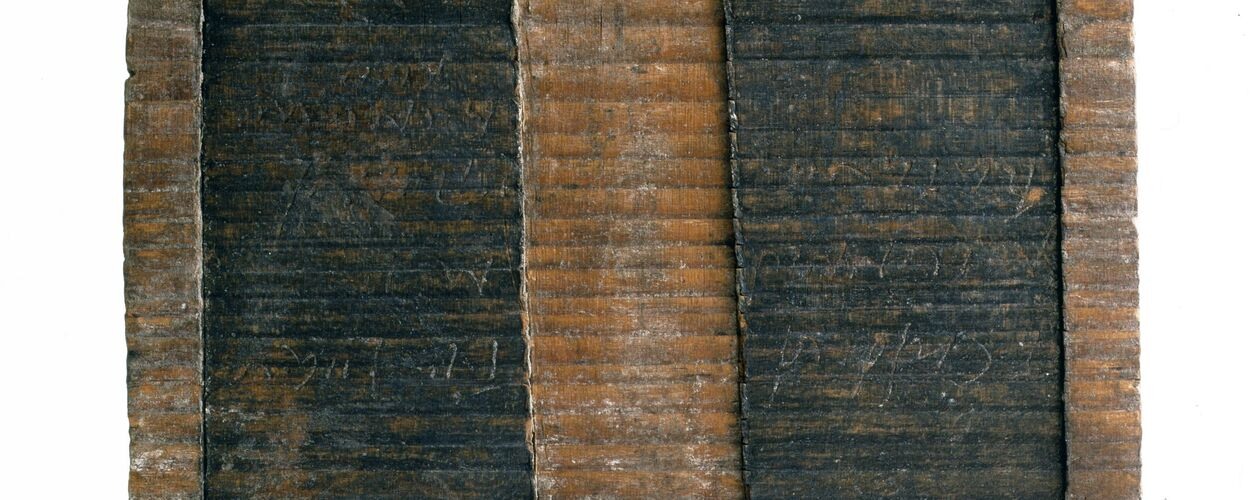Nowadays we read texts such as PDF files on our tablet devices or e-Readers. Even contracts are exchanged in digital form. Paper is becoming old-fashioned. Even more out of date – as old as the Romans, in fact – is the Tolsum Writing Tablet. Just as happened to many mounds in Friesland, the Groot Tolsum terp (an artificial dwelling mound) was leveled at the beginning of the previous century. In 1914, one of three pieces of wood making up a pinewood writing-tablet was found during excavations and brought to the Fries Museum. Although it may not look that special at first sight – it is brown, it does not shine and it is only about the size of a modern tablet device – this is, in fact, a truly remarkable object. A Roman writing tablet is a rare find in our parts and is an important contribution to the Roman history of Friesland. It is also the northernmost handwritten Latin text on the continent.

Roman writing tablets such as the Tolsum Writing Tablet were coated with a layer of wax. People ‘engraved’ letters into the wax with a stylus. The wax on this writing tablet disappeared a long time ago, but since the stylus was pressed so hard when it was written, an impression has been left in the grain on the wood. Initially, it was thought that the text related to the sale of a cow by a Frisian to a Roman, possibly confirming trade relations between the Frisians and the Romans. It is interesting to interpret the text this way because cows are so inextricably linked with Friesland. After all, what could be more telling about contacts between the two groups than the sale of a Frisian cow to a Roman? This interpretation also tied in with the stories about the taxes Frisians had to pay to the Romans in the form of cow hides, a burden that eventually provoked the Frisian peasant revolt in 28 AD.
Because of doubts about the interpretation of the text, the writing tablet was sent for examination to Oxford in 2009, where it turned out that Frisian cows are not mentioned at all. Instead, the text appears to be the second half of a loan-note for a sum of money between a debtor whose name is lost, and a slave named Carus. The exchange was witnessed by several Roman legionnaires, including a Batavian. The date was revised to 23 February 29 AD, making this the oldest written document in the Netherlands. The mention of the Batavian soldier is unique for the time. The contract possibly could be related to the Frisian revolt, but this cannot be confirmed with certainty.
The text on the Tolsum Writing Tablet therefore tells a tale of a slave and a debtor. But now the story of this writing tablet includes the disappearance of a Frisian cow as well. Almost 2,000 years after it was made, this writing tablet has been declared a Frisian treasure. Perhaps, in 2,000 years´ time, a tablet device of today could end up being displayed as a highlight in a museum in a similar fashion.
